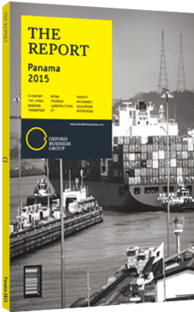Why the number of building permit requests in Panama has fallen
As one of the main challenges in Panama’s construction sector despite the rapid growth of recent years, many developers point to the process of issuing building permits, which has been fraught with delays and rising prices. Permit costs have risen significantly in some municipalities, such as San Miguelito, which raised them by 40% in 2015. The reasons given for such adjustments were that the price of construction materials has risen, and that fees had not been raised in over a decade. According to data from Panama’s comptroller general, from 2014 to 2015 construction material prices rose by 6% for wood and sand, by 4.6% for concrete, and by 2.4% for stone and brick, though they fell by around 5% for most metal-related materials, such as electric cable, galvanised zinc and rebar.
Permit Delays
In addition to rising costs, realty and construction groups note that delays in processing permits could be holding up projects worth as much as $630m. Research by Martes Financiero, a local newspaper, reports that some 95 different procedures must be carried out at more than 19 state institutions before construction can begin, and that plan approval alone can take up to six months. Two main reasons are the complexity of processes and lack of modern tools to expedite them.
To reduce such process times, authorities are working on a digital system for plan approvals which, though in the works for some time, is still awaiting implementation. Another measure is the follow-up procedure for the permit process. Though today there is no easy way to do this, the Works and Construction Department of the Municipality of Panama has talked of implementing such a tool in the first half of 2015. In an interview with Martes Financiero, the department’s director, Gonzalo Barrios, said that the delays are not all on the municipality’s side. Citing a recent evaluation, he said that out of a total of 1452 projects then being evaluated, more than 97% had corrections pending with the developer.
Regulations
Updates to regulations are another hold-up. In November 2014, construction permits in the Panama Bay area were suspended because of a required revision of safety and general construction norms. The main cause was attributed to the security norm NFPA 101, which deals with rules on sprinklers, fire escapes and other safety issues.
Adding to such safety checks, the Ministry of Housing and Land Management has reached a consensus with Panama City’s municipal authorities for a project aimed at protecting mangroves surrounding Panama Bay. This project may directly affect 15 developments, in both residential and infrastructure, from Costa del Este to Pacora. The municipality reported that all development affected by the mangrove conservation initiative will be put on hold until a final decision that may be delayed until mid-2015.
Backlog
Meanwhile, the president of the Panama Chamber of Construction, or CAPAC, Roderick McGowen, told La Estrella de Panamá that the number of permits requested had fallen by 30% in 2014 compared with 2013, saying this was probably due to the slow pace of approvals. CAPAC further reports that the value of projects being evaluated by municipal authorities already exceeds $1bn.
In March 2015, the mayor of Panama City joined representatives of various construction guilds to negotiate for a simpler permitting and general administrative process. One of the goals was to simplify the processes for issuing construction permits and approving building plans. The Panama City mayor’s office has asserted in numerous media outlets that the delays are due to a restructuring of the permitting system. A recent meeting between that office and construction and real estate players has brought a sense of a possible solution in the making. With over 7200 permits in 2014 for a value of more than $1bn, local administrations have a big challenge in pushing forward one of the most important sectors in the country in an orderly and timely fashion.
You have reached the limit of premium articles you can view for free.
Choose from the options below to purchase print or digital editions of our Reports. You can also purchase a website subscription giving you unlimited access to all of our Reports online for 12 months.
If you have already purchased this Report or have a website subscription, please login to continue.

